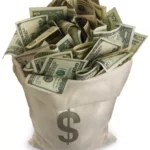Dollar Weakness Lingers as Markets Bet on September Rate Cut

For oil traders, the weakening dollar is a double-edged sword.
August 24, 2025
The U.S. dollar edged higher in early Asian trading on Monday, attempting to recover from a four-week low against the euro after Federal Reserve Chair Jerome Powell signaled a potential pivot toward rate cuts. The greenback gained 0.2% to $1.1699 per euro, though it remained near Friday’s trough of $1.1742, its weakest level since late July.

Against sterling, the dollar added 0.1% to $1.3502 following a 0.8% slide in the previous session, while it rose 0.4% to 147.46 yen, clawing back part of Friday’s 1% drop. The risk-sensitive Australian dollar briefly touched a one-week high of $0.6523 before easing back to $0.6484.
Despite these gains, the dollar remains under significant pressure following Powell’s speech at the Federal Reserve’s annual Jackson Hole symposium, where he warned of rising downside risks to employment and left the door open to a rate cut at the September 17 policy meeting.
Markets are now pricing in an 80% probability of a quarter-point cut next month, with nearly half a percentage point in reductions expected by year-end, according to LSEG data.
The Fed’s shift comes amid mixed U.S. economic signals, including a soft payroll report earlier this month and stronger-than-expected inflation and business activity data.

Powell’s comments solidified expectations of a cut, with Goldman Sachs analysts noting that “it will be up to the data to determine the pace and depth of cuts.” Key readings ahead include the Fed’s preferred inflation gauge, the PCE deflator on Wednesday, and August payrolls next Friday.
Meanwhile, political pressure on the central bank has intensified. President Donald Trump has stepped up attacks on Powell and other Fed policymakers, most recently targeting Fed Governor Lisa Cook over personal mortgage holdings.
The rhetoric has amplified concerns about Fed independence, adding another layer of uncertainty for markets.
For oil traders, the weakening dollar is a double-edged sword. On one hand, a softer greenback typically supports crude prices by making dollar-denominated oil cheaper for foreign buyers. This dynamic could provide near-term upside for Brent and WTI if the dollar continues to drift lower on dovish Fed expectations.

At the same time, Powell’s warning of rising risks to employment underscores a more fragile U.S. economic outlook.
If labor market weakness deepens and growth slows, oil demand could come under pressure later this year. The Fed’s September decision will hold major implications not just for currency markets but also for global energy consumption trends.
In the immediate term, crude prices may find support from dollar softness, but traders will closely watch incoming inflation and payrolls data. A rate cut that successfully stabilizes growth could extend support for oil demand, while confirmation of economic weakness could cap rallies.
Olprice.com






